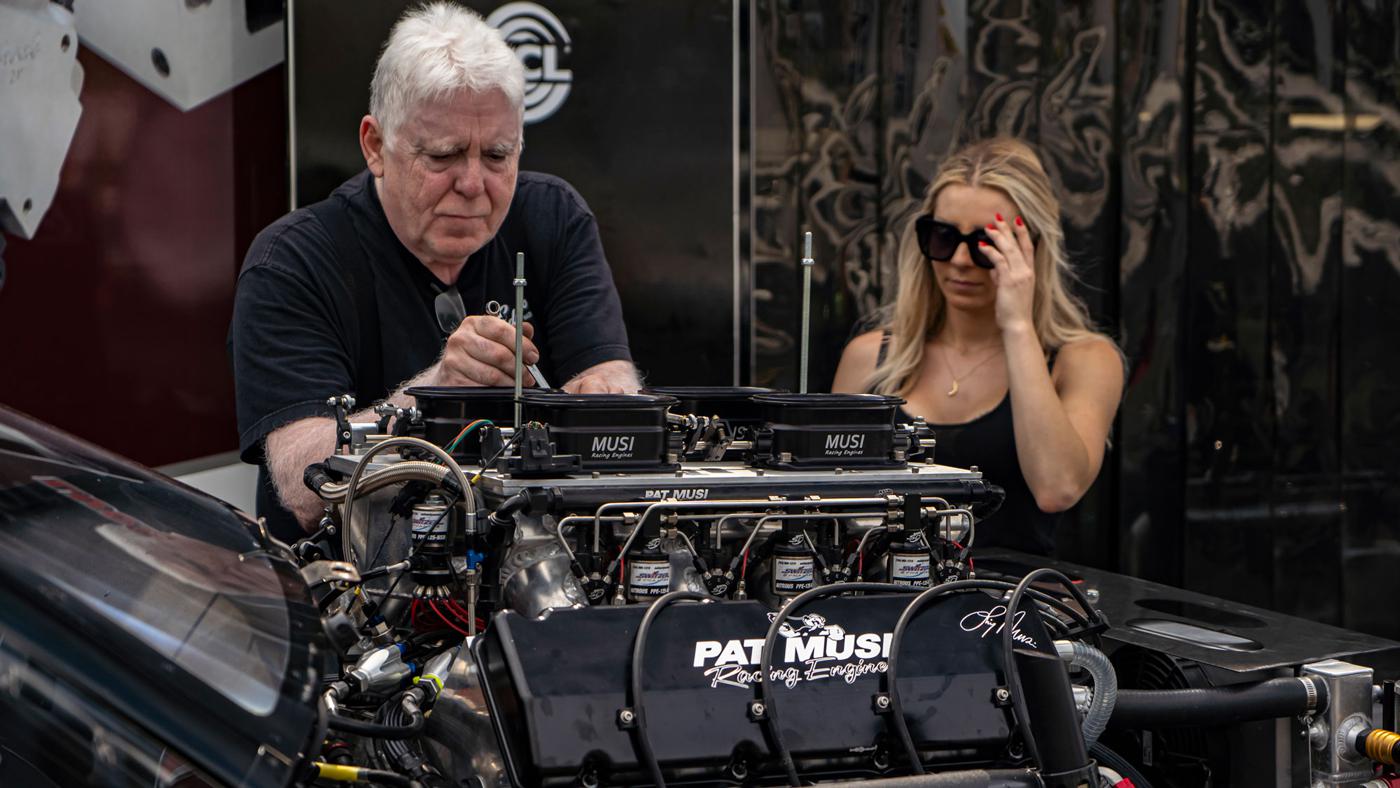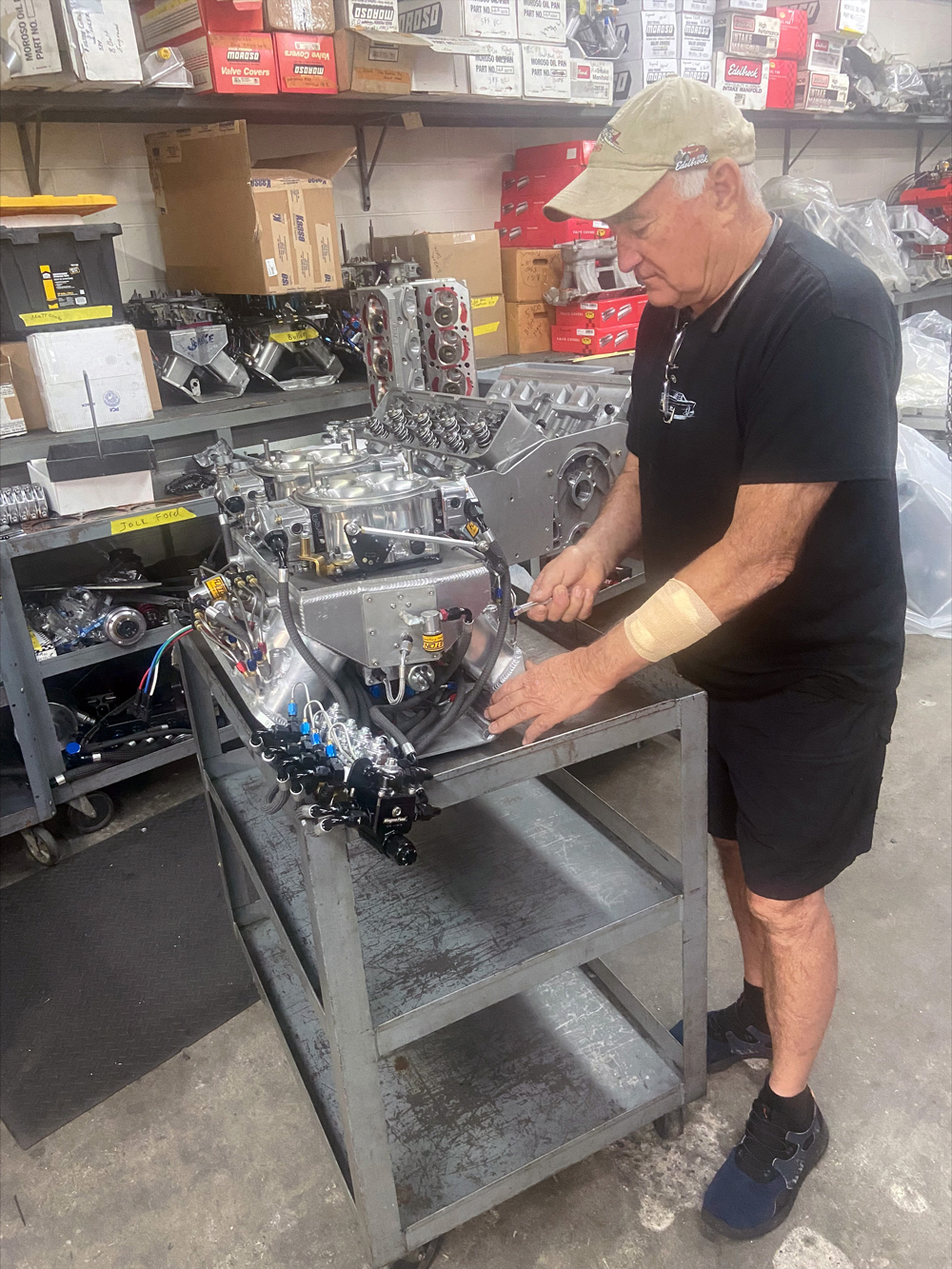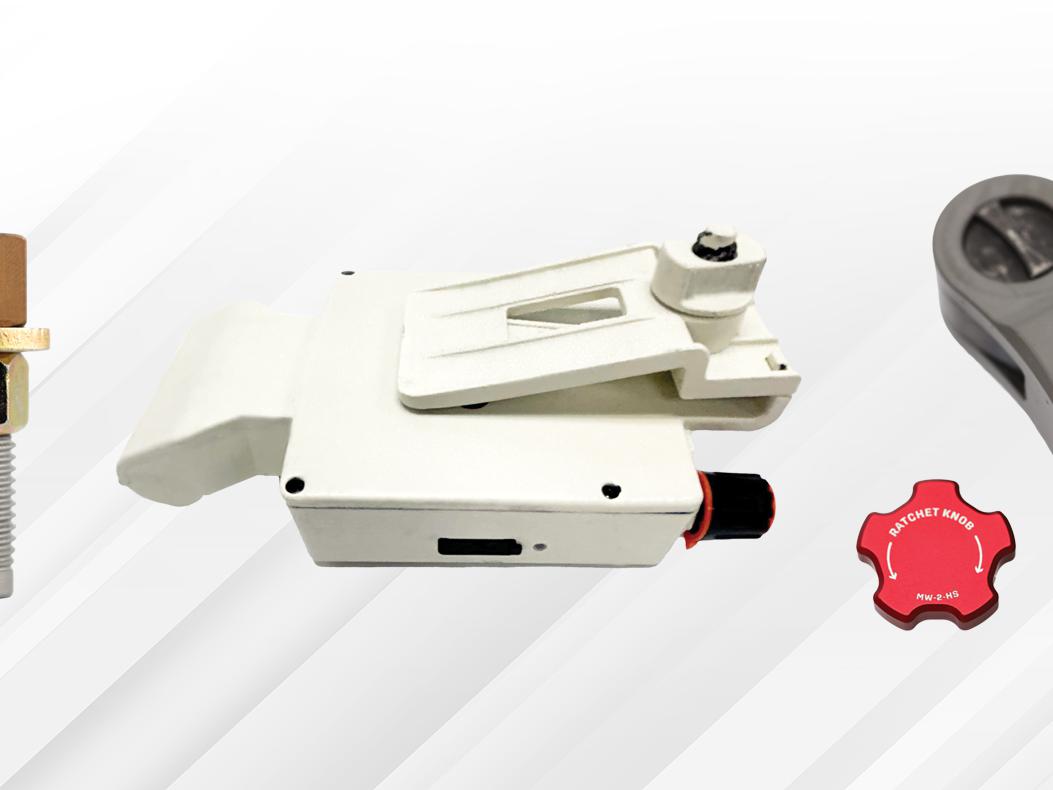Stop Doing That…Do This Instead: Nitrous Oxide

Pat Musi, at left, of Musi Racing Engines cautioned against exceeding the saturation point with too much nitrous. “The excess gets locked in the plenum and starts jumping holes,” he explained. “You have to be on your game and pull nitrous out of certain holes. It really gets touchy.”
From avoiding too rich a mixture to always knowing your saturation point, three top race engine builders share the do’s and don’ts for quick add-on horsepower.
While a fine-tuned nitrous oxide system can make a racing engine happy, a poorly maintained or tuned system is no laughing matter.
Nitrous oxide is a relatively inexpensive way to boost horsepower, but there is a fine line between the right amount and too much, the latter of which can severely damage your engine.
So, to help shed light on the matter we enlisted three top race engine builders for some of the do’s and don’ts when using this power enhancer: Scott Shafiroff of Shafiroff Race Engines in Bohemia, New York; Gene Fulton of Fulton Competition Race Engines in Spartanburg, South Carolina; and Pat Musi of Musi Racing Engines in Mooresville, North Carolina.
A Kiss Is All You Need
Shafiroff believes a “kiss” of nitrous to just one cylinder may be all the engine needs to get that extra boost of horsepower. “I tell customers, you might want to kiss, kiss one cylinder,” Shafiroff explained. “Just one cylinder at a time. Just a smidgen to see if you are going in the right direction. Once you find that happy spot, you aren’t going to improve performance a lot, but you are going to risk a lot.
“If a guy is smart and goes to an engine builder like us, I give them a base tune-up that they know the engine is going to be happy with right off the bat. He can just kiss it a little bit to where it will be happy in his car, and then he doesn’t have to touch it.
“It’s very risky in all these multiple, multiple stages when you are trying to go really fast, you never get a handle on it, and then you can hurt a lot of parts,” he continued.
“It’s really up to what you want the nitrous to do. If you want a fast bracket motor, like in Top Sportsman and Top Dragster, just find that sweet spot and stay with it. It’s not going to let you win more races if you make the thing 200 hp or 300 hp faster; what’s going to win races is consistency, to where you can run it all the way and not hurt it. Then, work on everything around the engine to make it more consistent and go a little quicker,” Shafiroff concluded.
There’s Such a Thing as Too Rich
Fulton believes today’s nitrous systems are more restrictive than the jets because of the controls that are built into the system. That is why he never recommends running a rich mixture because it can create havoc in the engine without increasing the speed.
“Any system should be designed where if you are controlling the flow with the jet pressure over the orifice, the jet should be the restriction in the system if you are going to tune it by the jets,” Fulton explained. “All of them think they are tuning it by the jet.
“About 50% of the nitrous that a motor will take does about 90% of what nitrous is going to do. They are putting so much in it, the tuning gets more critical, more critical, and more critical the more you put into it. It has to be more accurate, more accurate, more accurate.
“Well, a lot of them are inaccurate,” Fulton added.
“Even if it’s accurate, about 50% of the nitrous you are going to put in it does about 90% of what nitrous will do,” he repeated for emphasis. “They put way more in it for a very miniscule gain.
“In racing, an inch will win, but it gets crazy,” Fulton concluded.

Always Know the Saturation Point
Musi has been building nitrous engines for more than 50 years and stresses the saturation point to his customers. Exceeding that saturation point with too much nitrous will force the nitrous into areas of the engine where it doesn’t belong.
“When you get to the saturation point of what that motor will actually pull into charge, the excess gets locked in the plenum and starts jumping holes,” Musi explained. “You have to be on your game and pull nitrous out of certain holes. It really gets touchy.
“Cubic displacement plays a big part of it depending on the size of the engine, what the intake valve will pull in during an intake stroke. Whatever is left, if you have too much nitrous in, it will get in the plenum, jump to another hole that is opening, and that is where the burnup starts.
“It’s a delicate deal,” Musi emphasized.
Finding a Happy Spot
In the never-ending search for speed, the problem may be with the chassis setup of the car and not the horsepower of the engine, according to Shafiroff.
“Don’t fix a car problem with a nitrous tune-up,” he said. “It usually doesn’t end well.
“Find that happy spot where the motor is happy, and the plugs look good, and the plugs are happy, and the cylinder looks good, and work around it on the chassis and the car and get the car as fast it as it can be. It takes a pretty big change in a nitrous package to make an improvement of more than a couple hundredths. If you are trying to go three- to four-tenths quicker, then you need a bigger system. But you have to find that happy spot and stick with it.
“You shouldn’t be changing that stuff every week searching for power because you are going to mess it up. It’s a risky procedure doing that,” Shafiroff concluded.
Pay Attention to The Bottom End
While many racers are looking for top-end speed with nitrous, the bottom end of the engine really roars to life with extra torque.
“Nitrous is very good for the average guy to boost his power,” Fulton said. “It’s going to boost the horsepower up, but what it does to the torque of the engine is what makes it so fast. If it adds 200 hp to the motor, the bottom end will act like it’s 400 hp stronger. The bottom end is way stronger than the peak horsepower. It’s 400 hp better at bottom to mid-range and 200 hp at top.
“They think it’s 200 hp, but really, it’s more like 300 hp,” Fulton added.

The Consequences of Laziness
A properly maintained nitrous system will keep the engine happy. But a neglected system can be a sign of laziness, and that leads to sluggish performance.
“A lot of it becomes maintenance,” Musi explained. “The guy leaves nitrous solenoids activated with no nitrous. The coils are burned up. They don’t maintain their plungers.
“Peter Paul is the biggest manufacturer of all the solenoids. It’s not a secret. Everybody has the same parts, but they don’t maintain their stuff. They think it will run forever, and it won’t. You are talking about opening a Teflon plunger against 1,000 pounds of bottle pressure. Everything is sized depending on what you are doing.
“Most of the time, the poor setups just won’t run correctly,” Musi continued. “It would boil down to clogged-up jets or a bad coil or solenoid. Ninety-nine percent of it is self-inflicted, poor maintenance.
“If you take all the fuel away from a nitrous engine, it just won’t burn up. I’ve seen timing marks move, crank triggers to bolts come loose and fall down to advanced timing. Dumb stuff, but it just comes down to maintenance,” he concluded.
SOURCES
Fulton Competition Race Engines
facebook.com/Fulton-Competition-Race-Engines-193027214119824/
Musi Racing Engines
musiracing.com
Shafiroff Race Engines
shafiroff.com
 MEMBERSHIP LOGIN
MEMBERSHIP LOGIN JOIN PRI
JOIN PRI


